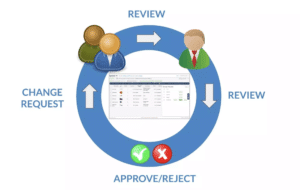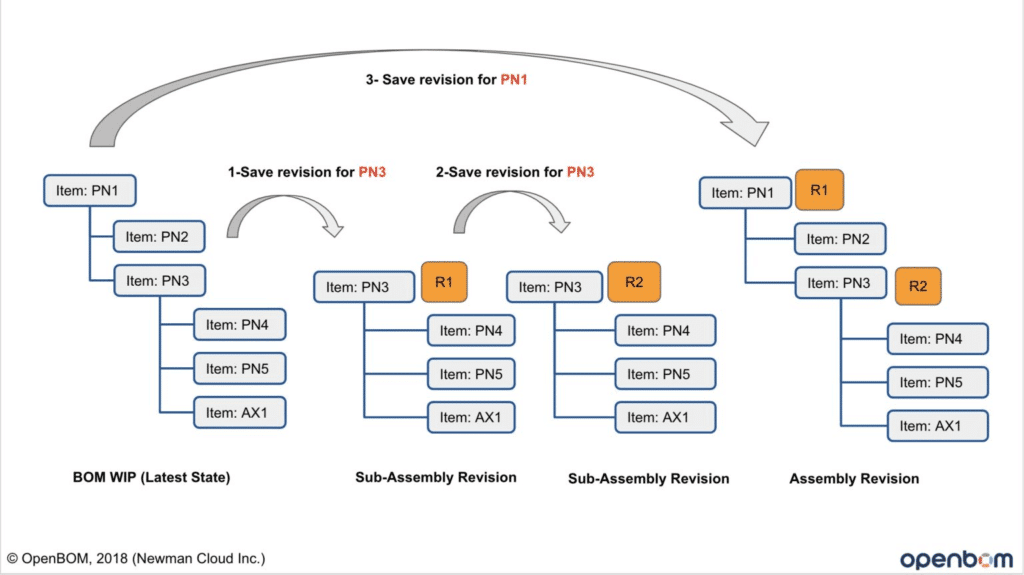
What is Change Management
The change management process is the process of requesting, planning, evaluating, and implementing changes in the system. The main process behind CM is the processing and traceability of changes to the data records. In the case of PLM and other engineering disciplines, CM is a process of controlling changes to product information during various stages of product development, manufacturing, and support.
Engineering Change Management Benefits
The main benefit of the change management process is to control the process of changes and provide company and system-wide traceability of changes in product development, engineering, manufacturing, and support. Without change management, product development will turn into chaos and the company will have zero traceability to any changes done in the company and outside with the customers.
Basic Elements of Change Management
Change management combined with 3 main groups of functional elements: change process, change implementation tasks, and people. Functioning together, they provide a solution for change management.
Change Processes
When product development moves to the next maturity phases beyond the design, communication between people in the organization becomes more complicated. It, obviously, requires more people to be involved in the processes of changes. At this time, changes are controlled by a group of people and require some synchronization before any change may occur. It may happen when a product is actually already manufactured or, for example, during the advanced stages of “engineering to order” manufacturing. Such situations require more coordinated work between people in different departments, which normally is going beyond just “raising hands” or “sending emails”. The most often used procedures at this stage are “approval processes”. PDM and PLM systems have the ability to make such implementations.
Processes and Tasks
One of the obvious outcomes of processes and workflow implementations is the need to manage lists of tasks for people. That’s why engineering management of change is so critical. When it comes to “change approval” or “change implementation”, the need to manage tasks becomes critical. The important element of process management is the ability to make tasks visible and transparent in the organization. It includes task assignment, task distribution, follows up, and changes. A good process workflow tool needs to provide ways to accomplish that. The user interface is an important element in the process implementation story. As a user, I need to have my tasks to show up. List views are one of the most obvious ways to do so. That’s why Microsoft Excel becomes popular. However, the ease of list creation in Excel is combined with a complicated way to maintain collaborative changes, assignments, and follow up. Microsoft SharePoint with Excel Services provided an interesting approach to manage Excel lists. Other alternatives can include “work management” or “task management” tools. Lists are still a very important element of the user interface there.
People and Processes
The most complicated element in all process implementations is people. The change management process is a multi-disciplinary task and it involved all people in the organization – designers, mechanical engineers, production planners, application engineers for change management in software engineering, and many others.
To capture processes is not a trivial task. Processes can be undefined, fuzzy, and even conflicting. Process Management, normally, cannot solve problems related to the process of capturing an organization. The flexibility of tools is an important factor here. However, even with full flexibility, this process can go wrong.
The requirements can be different depends on the type of communication. The engineering change management workflow can be different. The design team can collaborate via phone, email, or Excel spreadsheets. When it comes to more complicated communication, process management and workflow tools need to be involved. However, ad-hoc collaboration, structured workflow, and even a very sophisticated processes management tool can use a simple list-based user interface concept to communicate with users and provide task visibility.
Change Management using OpenBOM
OpenBOM provides a flexible and robust mechanism to track the lifecycle of the product and manage changes. It includes the following functions:
- Change History
- Revisions
- Change Report
- Change Request and Approval
OpenBOM keeps the full history of all changes. Everything is traceable and discoverable. Change history is automatically captured, so you don’t need to do anything. The mechanisms of change in history are triggered automatically. Every time you change data in OpenBOM catalogs, bill of materials, orders, and other data elements, it is captured and preserved in the OpenBOM database
A revision is an immutable snapshot (copy) of the BOM. It can be used to organize a stable baseline for a specific BOM representation (revision). Revision history is a linear representation of all saved revisions.
You can create a report with a list of changes that were made in a BOM between revisions. The report can be exported to Excel and used outside of OpenBOM. Currently, a change report can only be created between two revisions of the BOM.
An advanced change management mechanism is available in OpenBOM Company Subscriptions and it allows you to manage Engineering Change Orders and support the Change Request Approval mechanism.
OpenBOM’s lifecycle mechanism includes change requests, review, and approval stage.
An advanced change management mechanism is available in OpenBOM Company Subscriptions and it allows you to manage Engineering Change Orders and support the Change Request Approval mechanism.
OpenBOM’s lifecycle mechanism includes change requests, review, and approval stage.
Check more about OpenBOM Change Management, Revision Control, and Change Approvals
Managing Changes and Revisions
Change Management, Change Requests and Approvals
Nothing stands still in this world, change is the only constant. This old pearl of wisdom also applies to engineering and manufacturing. Once something is designed, chances are you will keep changing it. Even a new product will sometimes be created as a copy of an existing one with some changes applied. Product changes are impacting everything from design to engineering and quality management systems

Check more about OpenBOM Change Management, Revision Control, and Change Approvals
Managing Changes and Revisions
Change Management, Change Requests and Approvals
